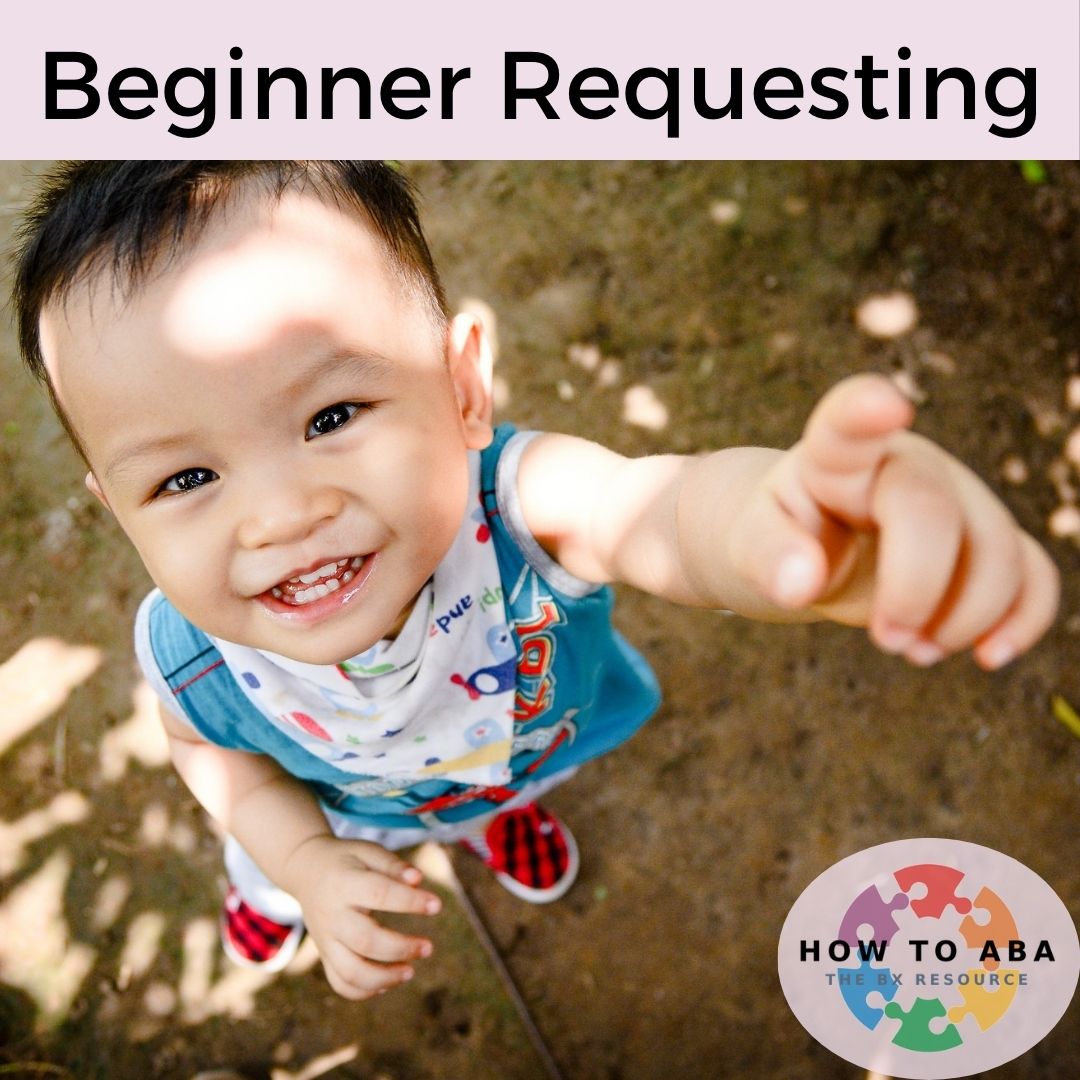
If I want something, I know how to gain access to it. If I am eating my beloved plate of pasta, I need to cover it in cheese. There are many ways I accomplish this, I can walk over to the fridge and take it out, I can ask my sister to “please pass the cheese,” I can even nod to the waiter when he offers it for my meal.
These may seem simple and obvious, but for our beginner learners, this type of requesting does not come naturally. Where do we start with beginner requesting for a strong communication foundation?
What Is Beginner Requesting?
Beginner requesting may relate to the age of the learner, or it may refer to the level of skill the learner has. Is this their first time receiving therapy, ABA or otherwise? The immediate thought caregivers have is, if they are not talking, how can they request. As the practitioner, we are much more informed on the different styles of communicating. Non-verbal communication will play a big role in beginner requesting.
Communication Temptations
A communication temptation is where you set up the environment for ample opportunities for your learner to communicate – for our beginner learner, the communication we are looking for is requesting. Instead of having every single toy easily accessible, have them out of reach (but still in sight!), or in bins that cannot be easily opened. This does not mean that all toys are unavailable. We still want to have an engaging and friendly environment.
When it comes to snacks, provide small portions of highly preferred snacks at a time so the learner must communicate that they want more. How will they communicate this if they are not verbally requesting? Find out below!
Pointing
A great skill to teach all beginner learners is pointing, this is something we can assist them with by gradually shaping reaching behaviour into a clear and defined point (index finger extended, other fingers closed in the palm of the hand). Pointing allows the learner to indicate items both near and far (think of those out-of-reach toys on higher shelves). Like a point, gestures can also be an acceptable beginner requesting skill. The learner may be indicating they want access to something by gesturing with their hand or head towards the item (my nodding to the waiter for cheese is a type of gesture).
Giving
A great communication temptation to set up is to have fun toys that the learner cannot operate independently. We love spinning top toys, bubbles, balloons, and other toys that require fine motor skills to operate. Once the learner comes in to contact with such a motivating toy, they want you to make the toy do it again. If this is the case, sit beside the child with your hand opened towards them. At first you may need to guide them to give you the toy by prompting them to place it in your hand. The end goal is for the learner to give you the item on their own.
Guiding
Like giving, guiding requires that the learner engage with the other person. This time, instead of giving the item to the listener, the learner takes the listener to the item. Often parents will tell us that their child pulls them by the hand to areas where the goodies are hidden. A beginner requesting by taking an adult by the hand has learned that they need the other person to fulfill the mand.
Picture Exchange
A type of beginner requesting that requires a bit more work by the practitioner to teach and the learner to emit is picture exchange. Picture Exchange Communication System (PECS) includes an exchange between speaker (learner) and listener (practitioner), where a visual of the desired item is given to gain access to that item.
Find out what else should be included in a Beginner ABA Program here!
Read about what comes next in our Verbal Requesting post.
What Should They Request For?
Not sure where to start? Beginner requesting will be most successful if you can identify what your learner prefers. Preference assessments will help inform you about what your learner wants – they will be more motivated to request for a preferred item than for a neutral or non-preferred item. Read about Preference Assessments here.
Watch our YouTube video on how we break down the different types of Beginner Requests!



Pingback: Tips To Get Your Child To Talk - How to ABA
Pingback: Intermediate Requesting - How to ABA